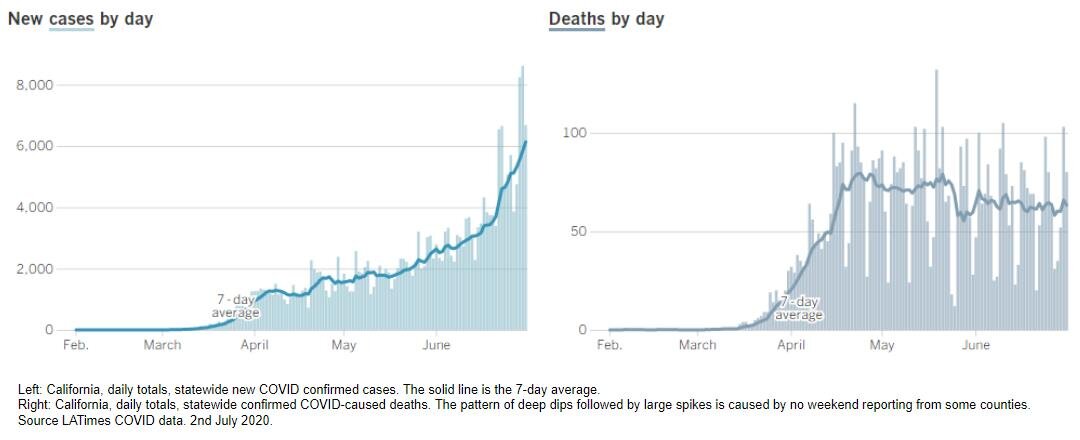COVID in Marin
In the ~three days since the last Marin HHS update: 2,452 tests, about 100 new cases, including 42 confirmed yesterday (PLUS 150 in San Quentin). No hospitalizations or deaths.
The new cases outside SQ - 63 in San Rafael; 22 in Novato; 1 in Sausalito; 2 in Ross Valley area. About 12 in other Marin County (not specified).
---
Mask Maths
A note on the effectiveness of wearing masks (thanks to Vanda Marlow for some notes on this, and a link to the research I quote!)
COVID is an airborne, respiratory pathogen. The principal vector is from via disease-carrying droplets expelled from the respiratory system of the infected person, via the air, into the respiratory system of the unlucky recipient. Droplets expelled by coughing, sneezing, wheezing, singing, shouting, talking, breathing.
Masks should work, then, right?
Here's Larry Brilliant, epidemiologist of some note and Mill Valley resident: "Marin is nowhere near out of the woods,” but ... “If 80% of people wore a mask 80% of the time, COVID would go away." Is that really true?
Really. Yes. They're easy and inexpensive, and the life you save may be your own. So in this post I want to note the science of how good they (and their wearers) have to be.
The science of how good masks need to be is well understood. The droplets start out (leaving the mouth or nose) in sizes from low tens of microns to low hundreds of microns. They shrink - due to evaporation - but then stay airborne, with smaller droplets staying in the air longer. So the first lesson is: since they're bigger as they're exhaled, it's critical that the infected person has something to block droplets. But, as we all know: there's a long period during which a person is infected and contagious - but doesn't have symptoms. And decent cloth is really good at blocking droplets. Masks are pretty good at blocking inhaled droplets as well - but they don't have to be that good there.
These ideas give mathematicians enough to get cracking on modelling. It's hard work but the basic idea is to answer the question: what level of face mask adoption by the public, associated with what level of face mask efficacy, would be required to reduce the effective reproduction number (R) below 1? And the answer is ... indeed, Brilliant is right. If nearly everyone wore reasonably effective masks nearly all the time ... COVID goes away.
The graphs attached show modelling (Oxford University group, Stutt et al, published a week or so back) that tries to show effectiveness at quashing transmission of COVID given lots of variables: the effectiveness of the mask - the graphs reading from left to right represent increasing effectiveness; the R(0) of COVID - the blue lines are the higher R(0) estimate; whether the masks are only worn after symptoms are determined (top rank) or all the time (bottom rank); and what percentage of people wear masks - each graph, from nobody to everyone. Each of the eight little graphs shows the effective R (written as R/e) in each case. The goal: R needs to get below 1.0.
OK, what to do?
First - compare the two rows. Wearing masks only after symptoms never does enough to spread contagion for R(0) = 4.0. Never.
Then look at the bottom row, the 3rd column - 75% mask effectiveness. Everyone, or nearly everyone, wearing reasonably effective masks, all the time ( = outside your household) kills the spread of COVID.
The message: Don't wait for someone to have symptoms. Always wear masks. Limit your exposure to unknown places and people.
Ill update this note with llinks to the research I cite here and some other sources, plus some of the data on lives saved or lost by wearing them, or not; share an anecdotal note on life in Asia.


























